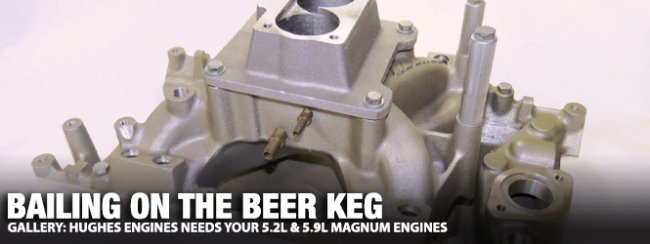
Enthusiasts often overlook the 1993-2003 Magnum engine as a performance option for the street or the track. Many believe the Magnum was merely a bridge between the performance and workhorse 1964-1992 LA production engines and the 2003 and newer late-model Hemi series of engines. However, during the decade long run, millions of Magnum engines were stuffed into Dodge Ram and Dakota trucks as well the sport-utility Durangos. With that many engines produced, ignoring the 5.2L and 5.9L Magnum engines, from a business standpoint, would be relinquishing a profitable and untapped market. Hughes Engines has nicely filled the void in performance components for the Magnum engines.
Hughes Engines has designed and produced, with assistance from Edelbrock, the FI RPM Air Gap manifold. The Air Gap is the best Magnum engine manifold available on the market. While the Air Gap has been a great seller in states that do not adhere to the California Air Resources Board (CARB) emissions standards, Hughes Engines has not been able to break into the Magnum engine truck market in Southern California. Hughes would like to cultivate that market, but the Air Gap currently is not CARB compliant.
Above left: The collaboration between Hughes Engines and Edelbrock resulted in the FI RPM Air Cap manifold (part no. HUG 5409) for the Magnum small-block engine. This is the Air Gap fully dressed with the Big Gulp throttle body (part no. HUG 5504) and the optional fuel rail kit. Above right: The FI RPM Air Gap is the best Magnum engine manifold on the market. However, to sell the Air Gap in states that have adopted the California emissions standards, the manifold requires a CARB EO number. In this photo, the manifold has the long and short spacers installed. They support the front accessory bracket.
To gain access to Southern California, Hughes Engines needs to attain a CARB Executive Order (EO) number. In addition to California, there are fifteen states and the District of Columbia that have adopted or are in the process of approving CARB emissions standards, which restricts the sale and installation of the FI RPM Air Gap manifold in more states than just California. Located in Illinois, it is a challenge for Hughes Engines to complete the CARB testing requirements from thousands of miles away, so Hughes Engines needs help. Southern Californian Mopar Connection Magazine readers can become part of this story and receive (earn is maybe a better word) a free manifold in return for their labor.
Hughes Engines needs Southern Californian owners of stock (non-modified) OBD-II (1996-2003) trucks equipped with a 5.2L or 5.9L Magnum engine to consent to their trucks and engines being a CARB testbed for the Air Gap manifold. To be part of the test, the owners will agree to the CARB regulations and emissions testing of their stock vehicle. After the truck passes the preliminary CARB tests, the owner will purchase the FI RPM Air Gap manifold kit (part no. HUG 5409), install it, and have their truck repeat the CARB testing procedures with the new manifold. Once the truck completes and passes the CARB testing with the RPM Air Gap, Hughes will refund the cost of the manifold kit and reimburse any expenses incurred during the testing process.
Above left: The factory “beer keg” manifold is the standard unit on all the 5.2L and 5.9L Magnum engines. While the beer keg performs acceptably, the FI RPM Air Gap outperforms the factory unit in all areas of the torque and horsepower curves. The beer keg has a Holley throttle body, a thermostat housing, an engine coolant temperature (ECT) sensor, an intake air temperature (IAT) sensor, four vacuum ports, a bypass hose fitting, and a heater core hose fitting. Above center: The beer keg’s Achilles’ heel is the plenum plate. The plate would crack and allow engine oil to leak into the incoming air-fuel charge. The oil-contaminated air could lead to engine-damaging detonation. Instead of attempting to repair or replace the plate under the beer keg, the RPM Air Gap solves the problem because Hughes Engines eliminated the plate completely. Above right: The beer keg is a tall manifold, and Hughes Engines made a large number of measurements of the manifold so that they could transfer the measurements to the FI RPM Air Gap. These measurements ensured the throttle body would be mounted at the same height and location as the factory throttle body on the beer keg.
The FI RPM Air Gap manifold is a direct-fit replacement for the factory “beer keg” manifold, and it maintains all the OBDII emission controls in the OEM locations (a CARB requirement). With the FI RPM Air Gap, dyno tests have shown an increase of horsepower and torque. In daily street driving, the Air Gap design provides up to a 30°F drop in intake air charge temperature, which has revealed not only the additional power but increases in fuel economy compared to the beer keg manifold. Every factory component that bolts to the beer keg also bolts to the Air Gap manifold. The throttle body is in the factory location on the Air Gap (height and orientation on the engine), so the throttle linkage operates properly with the factory throttle cable.
The distributor positioning, modular engine brackets with the alternator and AC compressor, thermostat housing, heater hoses, sensors, and the air filter and air filter ducting are an exact fit under the hood without interference with any portion of the Air Gap manifold. An added benefit of the design, the Air Gap does not have the pesky, crack-prone plenum plate like the beer keg. With the plate-free design, there is better manifold to cylinder head sealing and the elimination of an oil-contaminated air charge that could lead to an engine damaging detonation.

Above: To help Hughes Engines secure a CARB EO number, they will provide the complete FI RPM Air Gap to owners of 1996-2003 trucks with a stock, unmodified 5.2L or 5.9L Magnum engine. The owner will agree to the CARB testing standards of the stock engine. If the engine passes the baseline emissions tests, the Air Gap manifold will be installed and then have the truck’s engine retested to earn a CARB EO number. Upon the completion of the successful testing, the owner receives the manifold for their efforts.
With the superior design of the FI RPM Air Gap manifold, it is a critical part of any upgraded Magnum engine. Even if the engine has no additional modifications (other than the manifold), the Air Gap will produce additional torque and horsepower and provide increased gas mileage as a byproduct of its design. If you are from California and have an interest in working with Hughes Engines to help them acquire their CARB EO number for the FI RPM Air Gap manifold, get in touch with Dave Hughes at 309-745-9558 to learn about the process. For your successful efforts, you will obtain a free manifold and kit. Regardless of your location in the US (or the world), consider Hughes Engines for stroker kits, camshafts, cylinder heads, and factory ported throttle bodies for the Magnum engines.
Above left: The FI RPM Air Gap has a cast throttle body adapter that bolts to the manifold. The adapter places the throttle body in the same location as the factory manifold. Because the throttle body is located correctly in the factory position, the air filter housing, air filter ducting, and throttle cable linkage fit perfectly without the need to modify any factory components. Above center: The FI RPM Air Gap has all the factory provisions, in the OEM locations, for the thermostat housing, an engine coolant temperature (ECT) sensor, an intake air temperature (IAT) sensor, four vacuum ports, a bypass hose fitting, and a heater core hose fitting. Above right: With the FI RPM Air Gap, dyno tests have shown an increase of horsepower and torque. Still, in daily street driving, the Air Gap’s 30°F drop in intake air charge temperature has shown notable improvements in fuel economy compared to the beer keg manifold.









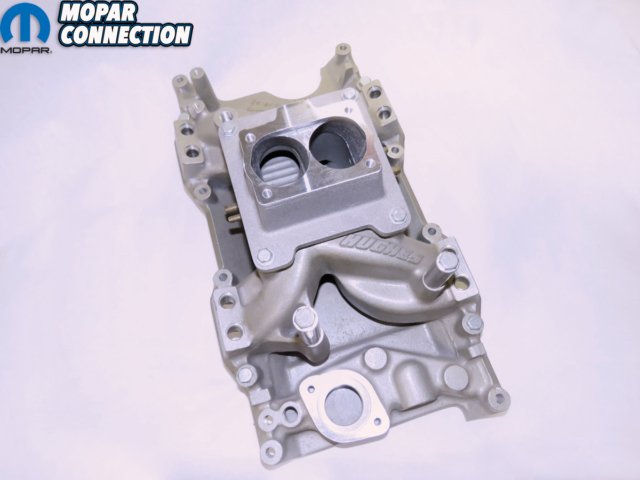


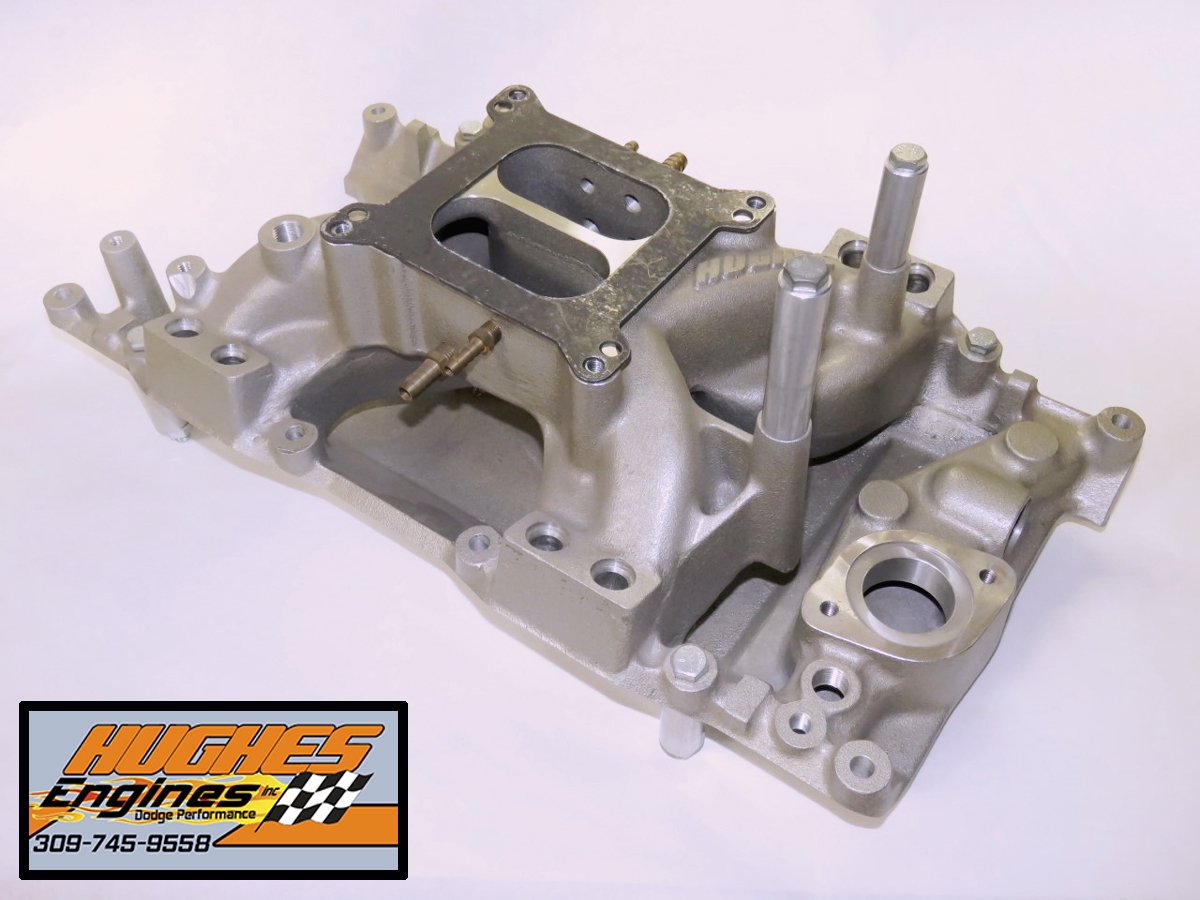


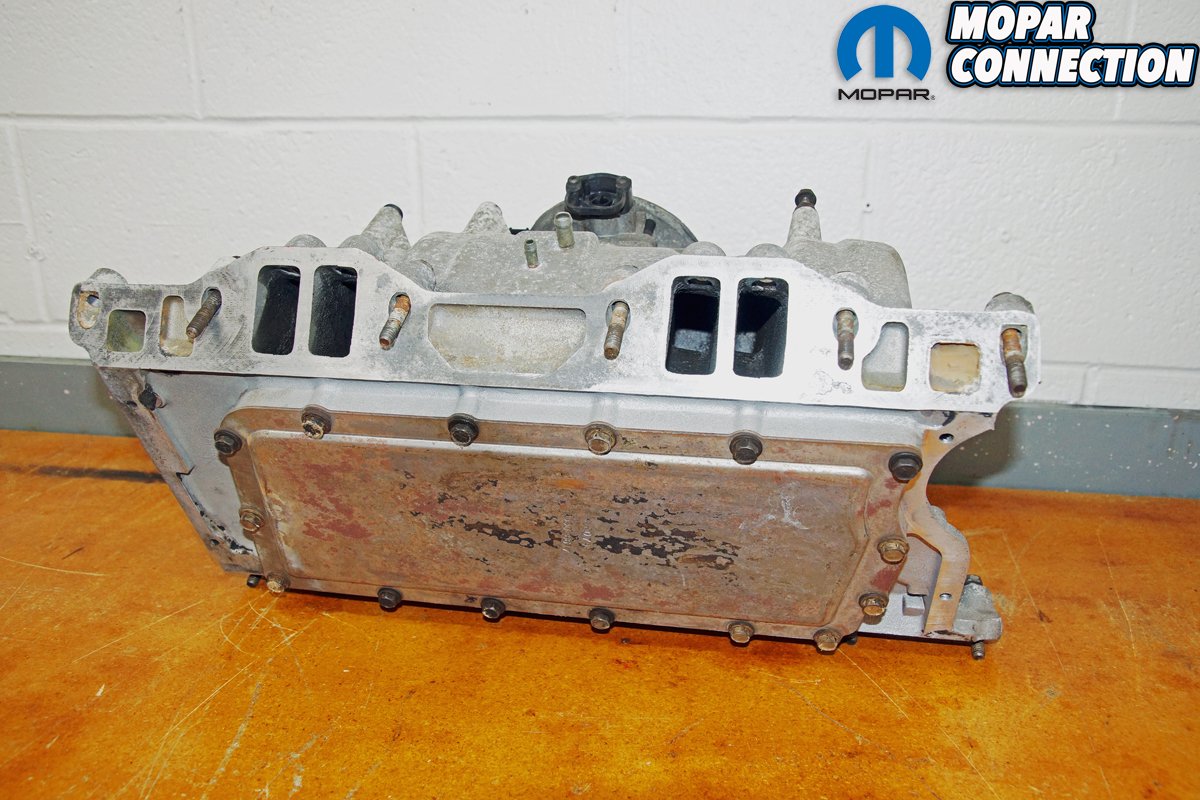

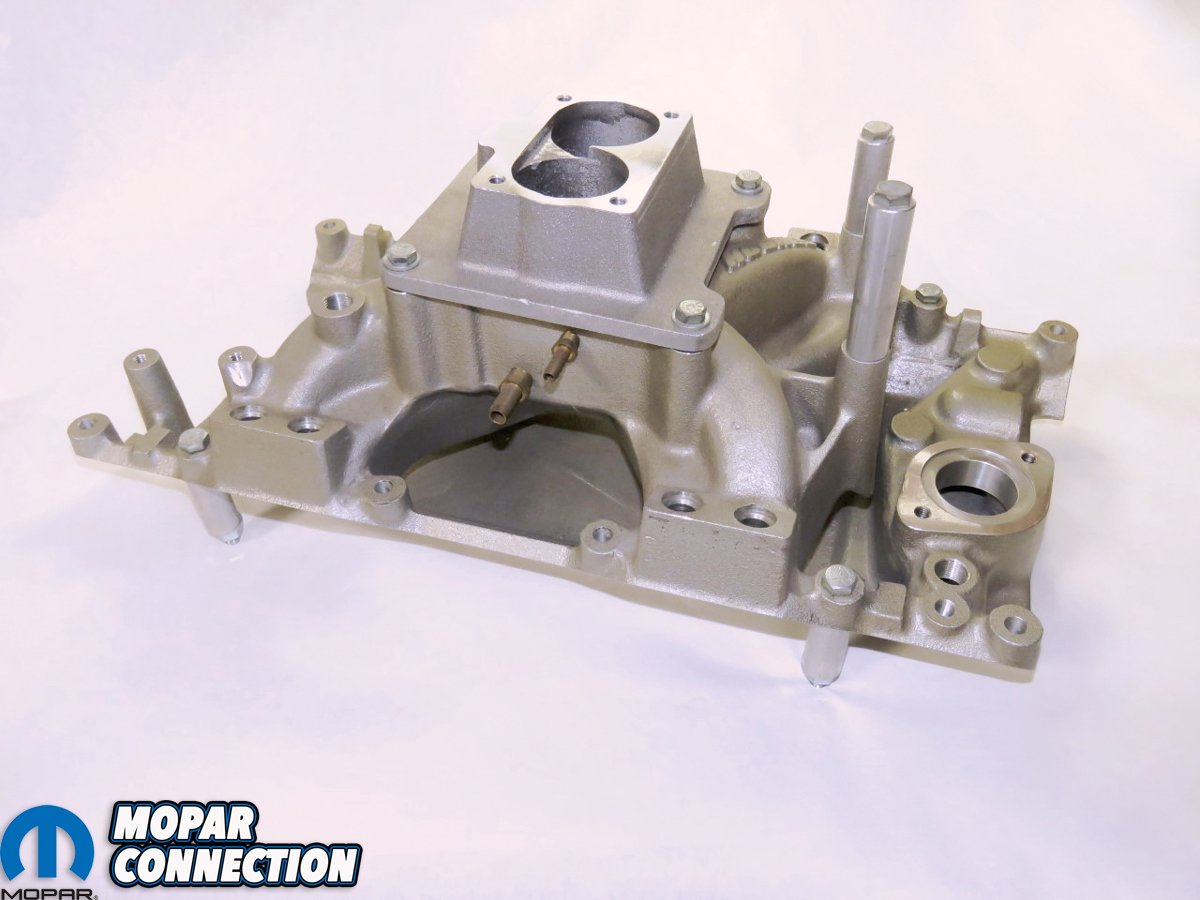
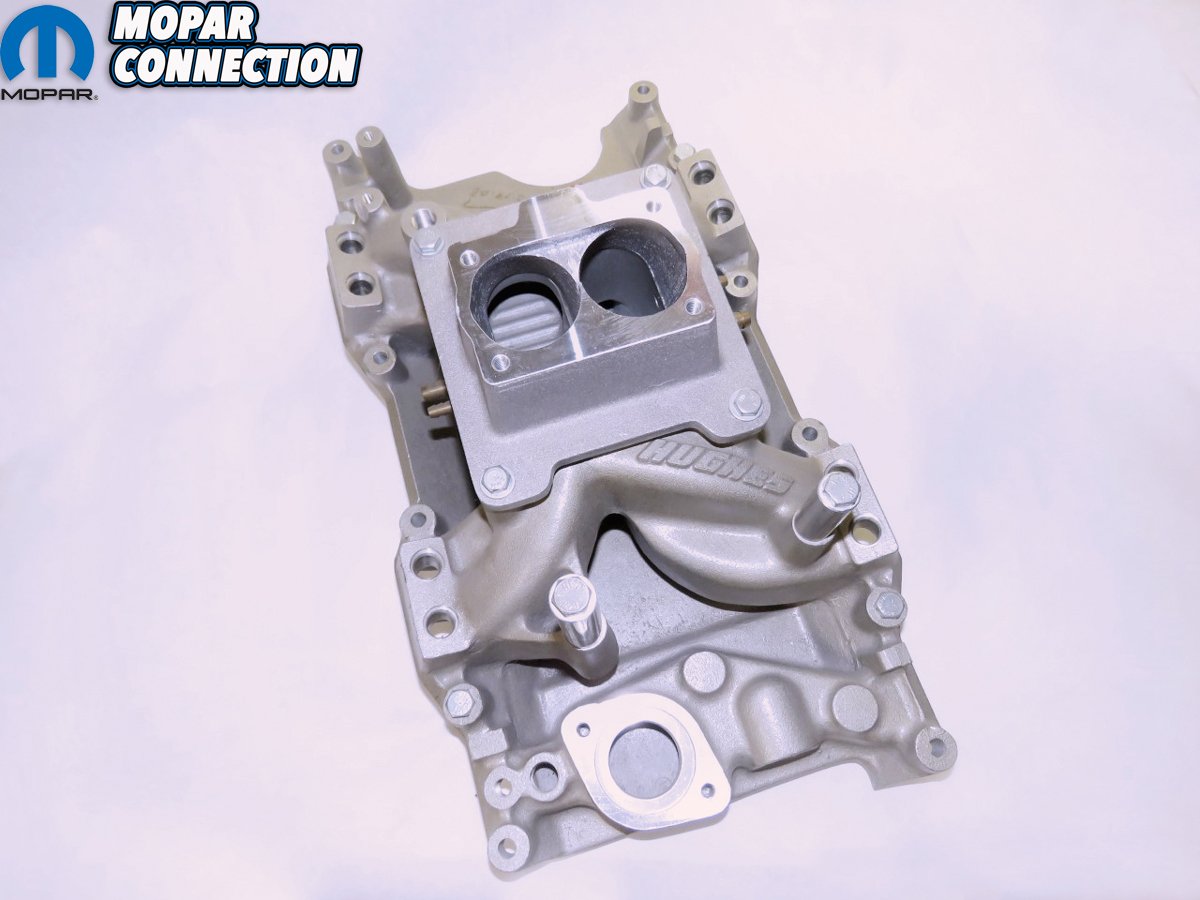




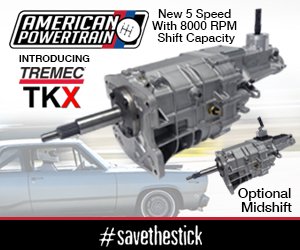



i live in GA does that let me out if not i have a 1997 ram 150 with a 5.2 liter already have the hughs plenum plate truck still does the same thing shakes a shudders when it locks up in OD would love to have this new intake on my truck with that big gulp TB
I live in Columbus ga going to put a new 360 creat motor and this set up when I can get a hold of one can’t wait I’m sure it will be a big difference I have 222000 on old motor and still runs good
I have 96 gen 2 2500 5,9 v8 5speed still stock except throttle body but I still have stock still i b genial pig lol
where can I get this Huges Intake manifold
From Hughes Engines. We literally hyperlink to this product and provide you the part number and information.
I live in Northern California near the Oregon border and i have a 1996 Dakota regular cab 5.2 V8 4×4 with nv3500 5 speed manual transmission and i love mine daily drive it all the time over my 03 cummins 6 speed and i want to do more to it for daily driving but i would be interested if this would be possible to run this intake manifold setup for california testing purposes. (Im driving the dakota now cause ram got hit while parked by dui driver and insurance is fixing it so dakota is seeing all the driving now from 5000ft elevation by oregon down to 100ft or so around sea level but i drive my truck from northern california to oregon often and would be good testing that intake manifold in low or high altitude
I have been looking everywhere that the internet will lead me to buy this kit, but I can not locate it. Any suggestions about who might have it in stock? Please!
Thanks
Literally call Hughes Engines. On the phone. Talking to a human.
I live in Columbus ga going to put a new 360 creat motor and this set up when I can get a hold of one can’t wait I’m sure it will be a big difference I have 222000 on old motor and still runs good